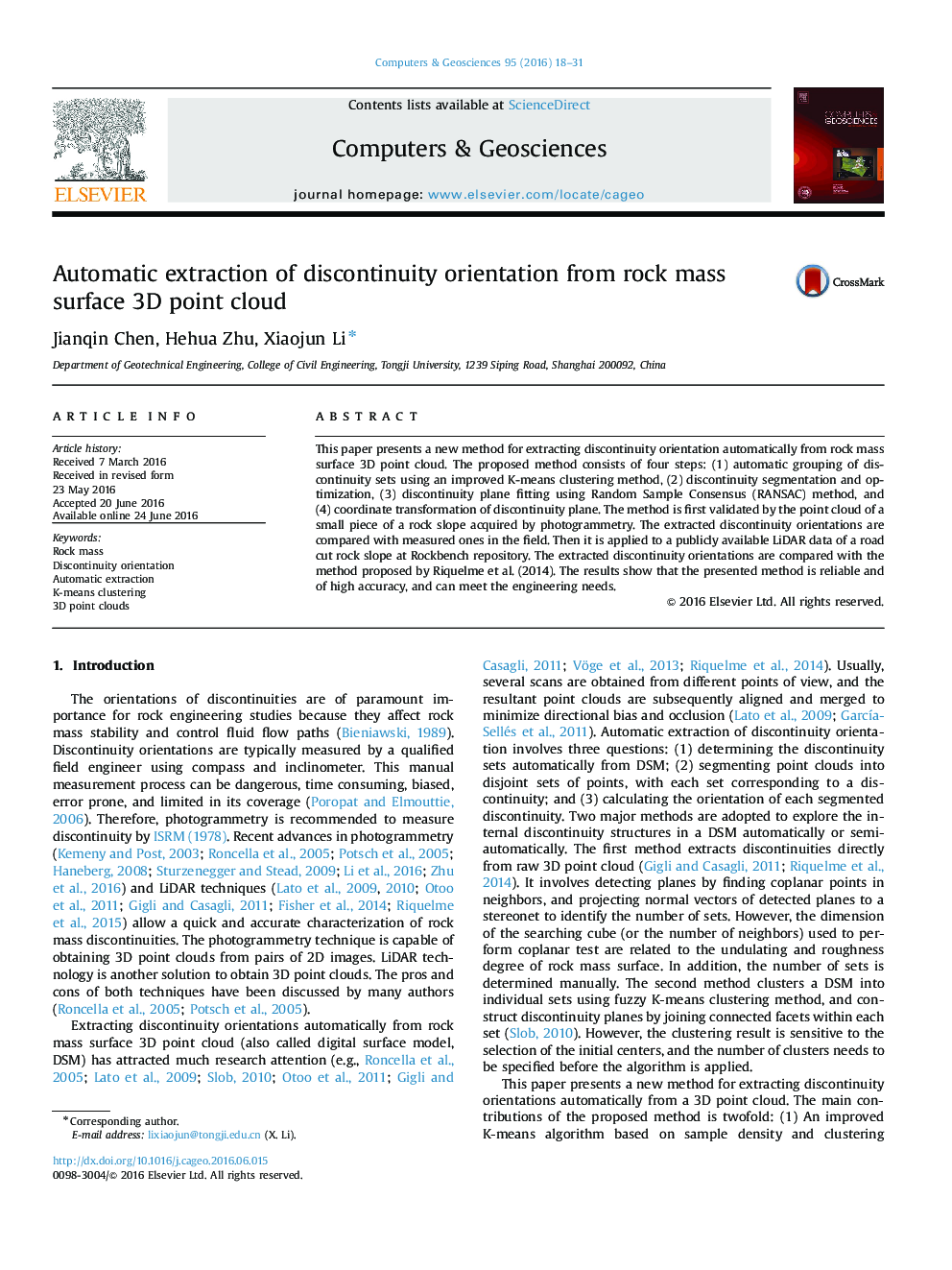| Article ID | Journal | Published Year | Pages | File Type |
|---|---|---|---|---|
| 506787 | Computers & Geosciences | 2016 | 14 Pages |
•An improved K-means algorithm based on sample density and clustering validity index is proposed to group discontinuities automatically.•Discontinuity segmentation is optimized by redistributing misclassified vertices and facets which are caused by undulating DSM surfaces.•This discontinuity orientation extraction method is automated, fast and effective in field application.
This paper presents a new method for extracting discontinuity orientation automatically from rock mass surface 3D point cloud. The proposed method consists of four steps: (1) automatic grouping of discontinuity sets using an improved K-means clustering method, (2) discontinuity segmentation and optimization, (3) discontinuity plane fitting using Random Sample Consensus (RANSAC) method, and (4) coordinate transformation of discontinuity plane. The method is first validated by the point cloud of a small piece of a rock slope acquired by photogrammetry. The extracted discontinuity orientations are compared with measured ones in the field. Then it is applied to a publicly available LiDAR data of a road cut rock slope at Rockbench repository. The extracted discontinuity orientations are compared with the method proposed by Riquelme et al. (2014). The results show that the presented method is reliable and of high accuracy, and can meet the engineering needs.
